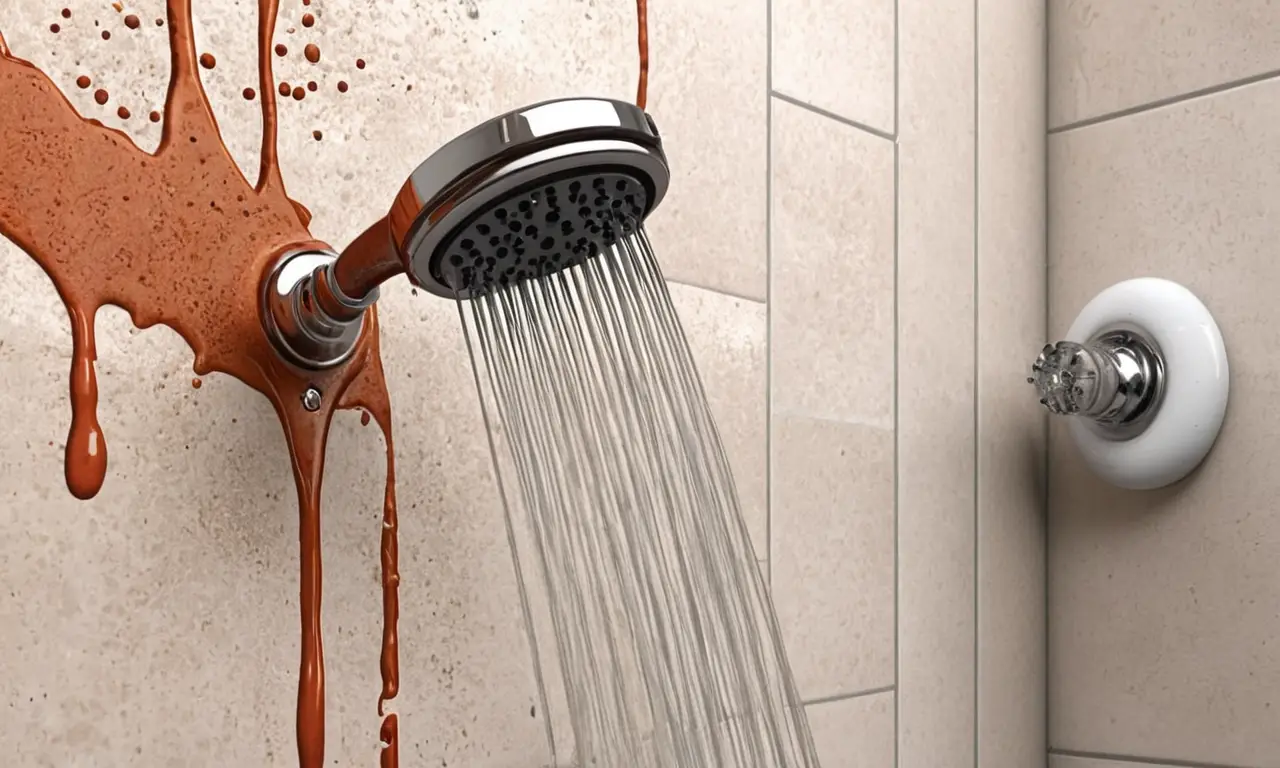
Seeing red residue from water in shower can be alarming, making your pristine bathroom feel less than inviting. While it might seem like a daunting problem, understanding the root cause of these stains is key to effectively tackling them. This article will delve into the common culprits behind red shower stains, providing you with practical solutions for removal and prevention.
From identifying rust and hard water deposits to addressing potential bacterial growth, we’ll equip you with the knowledge to restore your shower’s sparkling cleanliness. By following the steps outlined in this guide, you can confidently eliminate those unsightly red residue from water in shower stains and maintain a hygienic and aesthetically pleasing bathroom environment.
Red Shower Stains Causes
Red shower stains are often a result of various factors interacting with your plumbing system and showering habits. The most common causes include rust, mineral buildup from hard water, and even certain types of bacteria. Each of these culprits requires a different approach to removal and prevention.
Understanding the specific cause of your red shower stains is crucial for selecting the most effective cleaning solution. For instance, using a harsh chemical cleaner on a bacterial stain might be ineffective and could even exacerbate the problem. Conversely, applying a rust remover to hard water deposits would be equally futile.
Rust Stains in Showers

Rust stains are a prevalent issue in showers, particularly those with older plumbing systems or exposed metal pipes. The reddish-brown discoloration arises from iron oxide, which forms when iron reacts with oxygen and water.
Identifying Rust Stains
Rust stains typically appear as reddish-brown patches on shower walls, floors, and fixtures. They often have a rough texture and may flake off easily. If your shower has exposed metal pipes or fittings, rust stains are more likely to occur in those areas.
Hard Water Stains
Hard water contains high levels of dissolved minerals, primarily calcium and magnesium. When hard water evaporates from your shower walls and fixtures, these minerals are left behind as white or reddish-brown deposits.
Recognizing Hard Water Stains
Hard water stains often appear as chalky white or yellowish-brown patches on shower surfaces. They may feel rough to the touch and can be difficult to remove with regular cleaning methods.
Bacteria and Shower Stains

Certain types of bacteria, such as Serratia marcescens, can thrive in warm, moist environments like showers. These bacteria produce a reddish pigment that can stain shower walls and fixtures.
Bacterial Stain Characteristics
Bacterial stains typically appear as bright red or pink patches on shower surfaces. They may have a slimy texture and can be accompanied by an unpleasant odor.
Removing Red Shower Stains
Tackling red residue from water in shower effectively requires a targeted approach based on the identified cause.
Rust Stain Removal
For rust stains, use a specialized rust remover or a mixture of white vinegar and baking soda. Apply the solution to the affected area, let it sit for several minutes, then scrub with a non-abrasive sponge or brush. Rinse thoroughly and repeat if necessary.
Hard Water Stain Removal
Hard water stains can be removed using a commercial hard water stain remover or a homemade solution of equal parts white vinegar and water. Apply the solution to the affected area, let it sit for 15-20 minutes, then scrub gently with a non-abrasive sponge or brush. Rinse thoroughly.
Bacterial Stain Removal
To eliminate bacterial stains, use a bleach-based cleaner diluted according to the manufacturer’s instructions. Apply the solution to the affected area, let it sit for 10-15 minutes, then scrub thoroughly with a non-abrasive sponge or brush. Rinse well and disinfect the shower afterward.
Conclusion
Red red residue from water in shower stains can be frustrating, but understanding their causes empowers you to effectively remove them. Whether rust, hard water deposits, or bacteria are responsible for the discoloration, this guide provides practical solutions tailored to each culprit. By implementing these strategies and maintaining good hygiene practices, you can keep your shower sparkling clean and enjoy a refreshing bathing experience.
